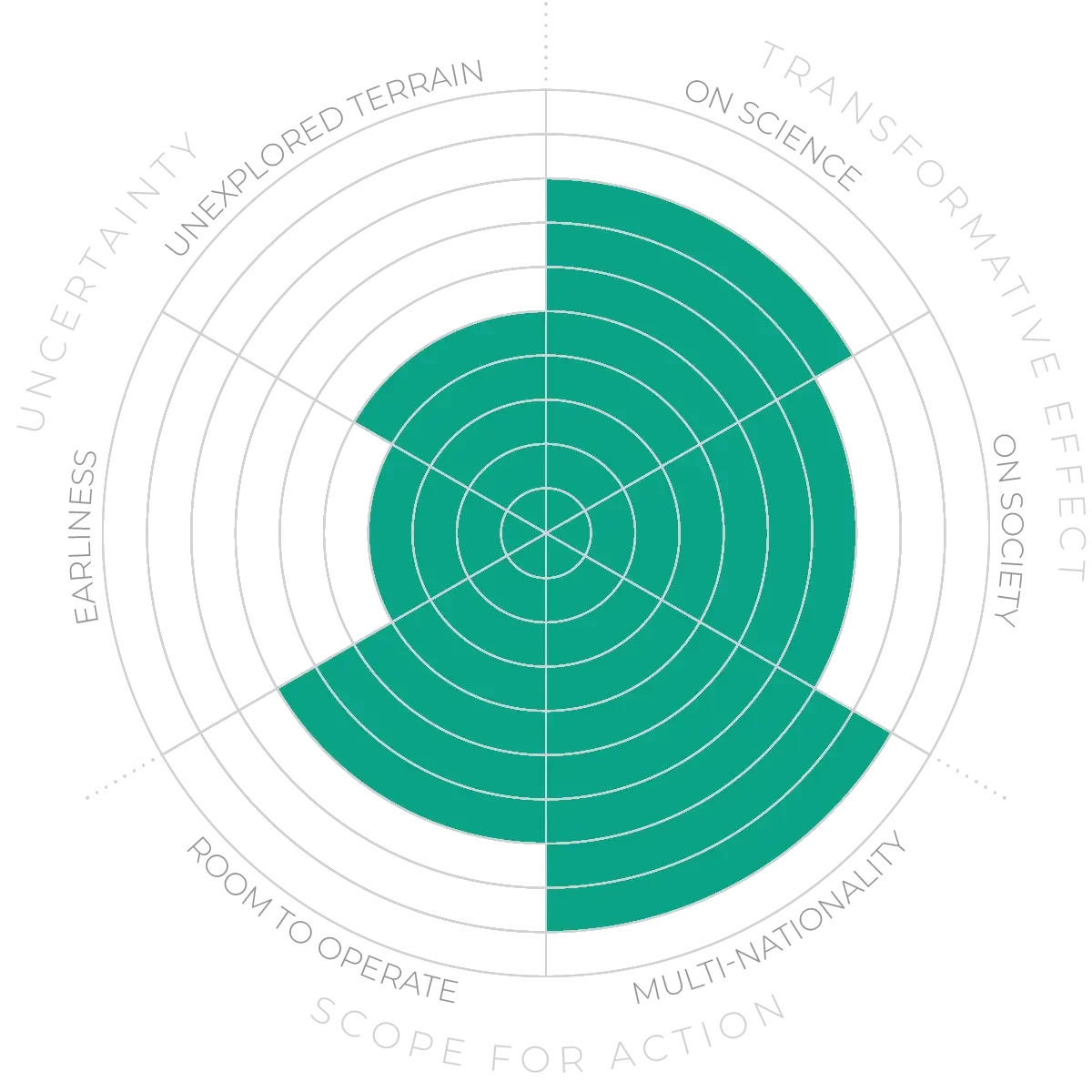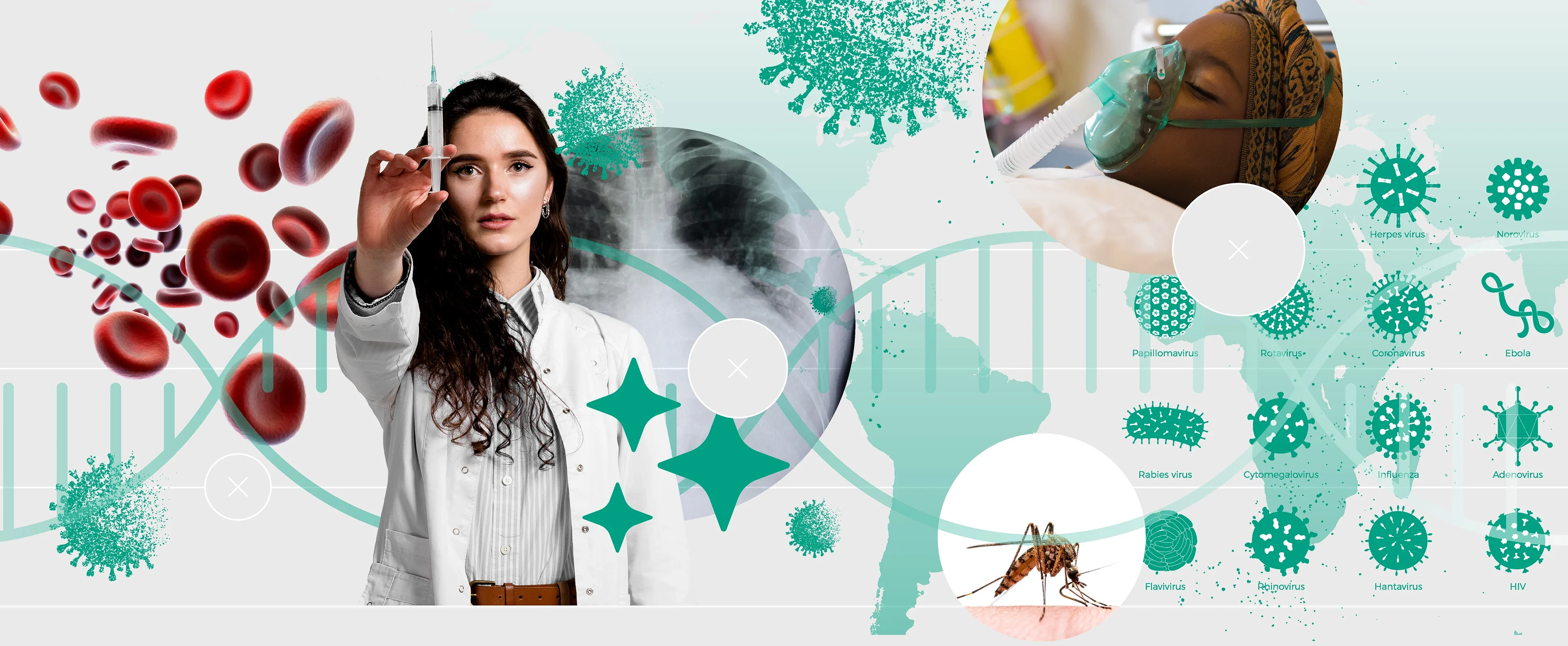Future Horizons:
10-yearhorizon
Pathogen genotypes reveal likely consequences of infection
25-yearhorizon
AI models eliminate animal research
Other work is improving our understanding of how the immune system interacts with other bodily systems in intricate ways. A seemingly simple infection might set off a complex cascade of changes within the body, for example, especially in conditions like long COVID. Conversely, children’s plasma proteome is remodelled by exposure to malaria, leading to natural immunity, and understanding this could lead to new therapeutics.5
Bringing such distinct datasets together is challenging but offers the potential for great insights.6 It has become possible to predict COVID-19 mortality solely by analysing gene expression in the patient’s blood, for example.7 Similarly, rich biological datasets are helping to explain long-established but mysterious patterns in infection biology. For instance, specific changes in the immune system may account for the much higher death rates from COVID-19 among the elderly.8
AI is mining insights from the vast datasets generated by research. For example, machine-learning models can predict how virus proteins will interact with host proteins,9 and forecast long-COVID outcomes based on immunological data.10 However, AI expertise and infrastructure is currently centred in the rich West: there is an urgent need to expand AI access in low and middle income countries, where it can enable biomedical progress even in low-resource settings.
Decoding infectivity - Anticipation Scores
The Anticipation Potential of a research field is determined by the capacity for impactful action in the present, considering possible future transformative breakthroughs in a field over a 25-year outlook. A field with a high Anticipation Potential, therefore, combines the potential range of future transformative possibilities engendered by a research area with a wide field of opportunities for action in the present. We asked researchers in the field to anticipate:
- The uncertainty related to future science breakthroughs in the field
- The transformative effect anticipated breakthroughs may have on research and society
- The scope for action in the present in relation to anticipated breakthroughs.
This chart represents a summary of their responses to each of these elements, which when combined, provide the Anticipation Potential for the topic. See methodology for more information.



